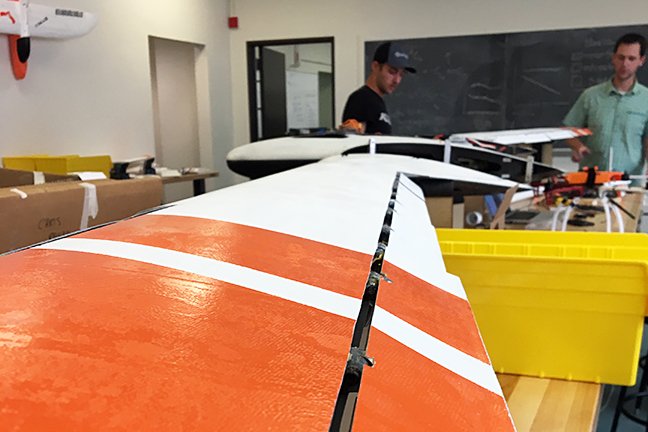Seagate reaches students in labs, courses, and research projects

Above: The Uninhabited Aerial Vehicle lab in the Department of Aerospace Engineering and Mechanics is also a recipient of Seagate's generosity. The new equipment will have an impact on student research and education on drones.
Seagate’s giving to CSE totals $3.9 million
MINNEAPOLIS / ST. PAUL (09/25/2019) — The College of Science and Engineering at the University of Minnesota recently received another set of equipment from Seagate Technology, bringing the company’s donation to more than 200 pieces since 2018.
The equipment, which included a digital oscilloscope, thermal shock chamber, and multiple prototyping systems, was distributed among the Departments of Aerospace Engineering and Mechanics, Electrical and Computer Engineering, and Physics and Astronomy.
“I'm such a huge believer in industry partnering with education where possible, and think that used equipment might be a greatly under-utilized vehicle for all sides,” said Mark Dubé, a senior engineering director at Seagate and graduate of the University of Minnesota (Mechanical Engineering, M.S. '91) who coordinated the donations.
Seagate has a long-standing partnership with the University. In addition to donating equipment, the Cupertino, Calif.-based company funds a number of research projects and employs University alumni, including College of Science and Engineering graduates, worldwide.
More than 400 current Seagate employees hold a degree from the University of Minnesota, according to Dubé. Over the last six years, 99 graduates started working at Seagate within a year of graduation. In fiscal year 2019, Seagate hired 30 currently enrolled University of Minnesota students for internship positions—97 percent from the College of Science and Engineering (CSE).
Wide-reaching equipment
CSE faculty and students are using several equipment from Seagate’s donation this year and last year in freshman seminars and a number of experiential learning courses, like “Aeromechanics Lab,” “Methods of Experimental Physics” and “Design, Build, Model, Simulate, Test and Fly Small Uninhabited Aerial Vehicles.”
In “Aeromechanics Lab,” for example, the Department of Aerospace Engineering and Mechanics’ (AEM) main undergraduate laboratory class, between 70 and 80 students each year will handle the donated signal analyzer, accelerometers, and amplifiers.
Research teams at CSE are also benefiting from the donation. These include undergraduate and graduate students on the Stratospheric Ballooning Team, the Small Satellite Project (CubeSat Team), and students working on drone projects at the AEM Uninhabited Aerial Vehicle Lab.
The University of Minnesota’s CubeSat team of roughly 30 students in varied STEM majors, for example, will use this year’s donation of an Epsec thermal shock chamber to test satellite components and a Nikon profile projector for circuit board inspection. The students are currently building two small satellite payloads—EXACT is sponsored by the U.S. Air Force’s University Nanosatellite Program; SOCRATES is backed by NASA’s Undergraduate Student Instrument Project.
“Seagate has been a great supporter of our department and the College of Science and Engineering,” said Perry Leo, head of the Department of Aerospace Engineering and Mechanics. “And we are grateful to all the people there who helped make these donations possible.”
Seagate’s life-to-date, or overall giving, to the College of Science and Engineering at the University of Minnesota Twin Cities campus totals $3.9 million.
